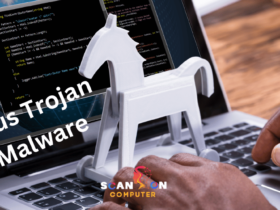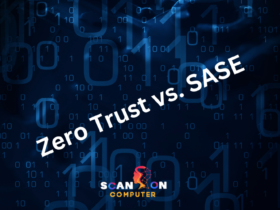Shift Left Security – Organizations often encounter difficulty when it comes to implementing shift left security, often due to strain between development and InfoSec teams or staff shortages.
To effectively implement shift left security, developers need developer-oriented tools and ongoing assistance from their security team. In this article we’ll look at ways you can move security closer to development while sharing some best practices to get you going.
What Is Shift Left Security?
Shift left security refers to the practice, process or tool being incorporated into the development pipeline as soon as possible. It’s a DevSecOps methodology which helps developers detect vulnerabilities in software earlier, helping improve its quality, speed, and security posture.
This approach reduces both cyber risks and costs by creating a continuous security workflow and eliminating security bottlenecks that slow speed. Furthermore, this strategy helps build relationships among dev, ops, and infosec teams and helps facilitate improved relationships among them.
To enable this, a unified policy framework must be in place in order to break down tooling and departmental silos. Developers require simple yet robust automated tools that integrate seamlessly with existing CI/CD tools and provide self-service results, such as static analysis/dynamic testing tools (SAST/DAST). Furthermore, clear communication and verification standards must also be in place so all teams work collaboratively and share similar information.
Shift left testing
Shift left testing refers to the practice of conducting security and quality assurance tasks earlier in the software development life-cycle (SDLC), providing developers with an early opportunity to detect bugs or potential issues before they reach production.
Research has also demonstrated the cost-cutting benefits of taking this approach: fixing vulnerabilities found during build and integration is much more costly than dealing with them at the end of a process.
To successfully implement shift left security, teams need the right tools. These should integrate with CI/CD pipelines and provide automated, scalable testing; furthermore they should support developers through self-service options that seamlessly fit into their workflows.
Shifting left must focus on increasing developer productivity and alleviating their workload, with security professionals providing feedback as they develop code to ensure quick fixes are made and customer satisfaction isn’t affected by delays in delivery schedules or any customer dissatisfaction.
Shift left security
Shift left security seeks to introduce testing early into the development process in order to detect vulnerabilities and fix them before being deployed in production. This can be accomplished using tools which provide fast feedback on code, helping teams identify and fix issues before they become more costly to correct during later phases.
Shift left security is particularly useful in modern DevOps environments that rely heavily on open-source software, third-party libraries and cloud infrastructure for agile development. Because your entire software supply chain relies heavily on these external components for security purposes, implementing shift-left testing strategies that provide continuous visibility and enforcer is vitally important to ensure continuous compliance and enforcement.
Static application security testing (SAST) and dynamic penetration testing tools are indispensable tools in shift-left security, providing quick detection and reporting of vulnerabilities to developers so they can fix them before creating serious issues in the wild. With an appropriate shift-left tool in their arsenal, development teams can gain complete visibility with intelligent risk prioritization to ship secure software faster.
Why Shift Left Testing?
Fixing security bugs during development rather than production is typically cheaper, faster, and simpler compared with later. Shift-left testing enables development teams to test more comprehensively and spot errors early.
Shift-left testing also ensures that developers and testers are in agreement regarding security standards and processes, encouraging collaboration among developers, InfoSec teams and InfoSec teams while eliminating bottlenecks.
Businesses must adopt a shift-left strategy to remain competitive in their industries, and one effective method for doing this is implementing tools that facilitate this process. Such solutions might include an all-encompassing security solution integrated with DevOps pipelines that provides a platform for monitoring security practices throughout CI/CD cycles as well as short-lived testing environments to save costs while also limiting downtime due to outdated data.
Why Shift Left Security?
As software development teams transition toward agile processes, it is necessary for them to incorporate shift left security practices in their SDLC in order to protect code integrity and deliver secure applications more quickly. While traditional testing occurs nearer the end of development cycles, shift-left security allows teams to detect and resolve potential security vulnerabilities early.
Shift-left security can also reduce the risk of deploying compromised code into production. As attacks increase (CERT reported 18,000 new vulnerabilities just this year alone!), strong defenses must be in place in order to detect vulnerabilities before they go live, decreasing breaches and data loss risk. Shift-left security allows you to do just this!
Shift-left security also encourages collaboration between dev and security teams, helping bridge any strain between developers and security engineers that might exist within your company. Shift-left can help bridge that divide with greater ease than any traditional approach could ever do – it encourages mutual respect between them all while making their working lives easier!
Why Is Shift-Left Security Beneficial for DevOps?
Shift left security can be beneficial to DevOps because it allows engineers to detect and resolve vulnerabilities before they cause serious harm, while simultaneously helping reduce development costs by enabling teams to address bugs and security issues earlier, using less time and resources in doing so.
DevOps teams may benefit from using shift left security because it helps enhance code quality and software products. By integrating security testing into SDLC processes, shift left security ensures developers write secure code from the beginning – helping prevent mistakes that lead to security vulnerabilities in production environments.
Shifting left can also improve relationships between security and DevOps teams. By embedding security tools directly into development environments, it can make security an integral component of software development processes and increase collaboration across teams.
Shift-Left Security Best Practices
Shift left security strategies foster strong relationships among developers, operations teams and security testers to ensure security is built into products from the beginning. They also reduce costs by detecting vulnerabilities early in development instead of finding out after they have been deployed into production.
Shifting left requires development teams to have developer-friendly tools and automated testing in place for it to succeed, along with knowledge of five best practices for creating a shift left security strategy.
1. Assess your software development process.
An effective shift left approach requires an in-depth assessment of your current software development process and an approach that ensures a gradual move toward DevSecOps methodology. Team leaders must work collaboratively to identify commonalities across teams and set appropriate success criteria, in order to guarantee any new processes introduced into development pipeline will have positive effects.
Analyzing your development process will enable you to gain clarity into where security checks are currently taking place and whether there is room for improvement with regard to automation and visibility. By automating compliance and security testing, setting guardrails, and providing developers with tools they can use throughout the process, you will reduce time taken to detect vulnerabilities and address them more quickly.
Shifting left can also reduce costs, as studies have demonstrated that correcting defects during design phase is six times cheaper than dealing with them during implementation and 15 times more costly when detected at testing stage.
2. Establish a new shift-left security strategy.
CISOs, researchers and security consultants agree that embedding security into development processes from the outset helps reduce both cyber risk and cost. A study by System Sciences discovered that fixing software issues during design was six times cheaper than doing so during testing or deployment.
There are, however, numerous obstacles that could prevent shifting left security successfully. Implementing the process requires significant cultural adaptation from teams – new ways of working together must be established so as not to cause disruption during implementation – which necessitates creating clear policies to guide this effort and ensure all team leaders make crucial decisions jointly.
Security teams must equip developers with developer-friendly tools in order to effectively implement the shift-left strategy, or it may prove challenging to catch vulnerabilities early and keep them out of production. Shift-left security requires collaboration between developers and security, who together must establish DevSecOps processes that are rapid, precise, and effective.
3. Educate teams in secure coding best practices
Shift left security requires training developers on how to code securely. This ensures they understand common vulnerabilities and follow best practices when it comes to coding and testing – thus helping prevent these issues from being missed by automated tools like vulnerability scanners that review code reviews.
Education of teams on how to code securely also reduces application release times. Without needing to wait for security reviews, developers can rapidly deploy features that meet customer demand more quickly.
Shifting security left means providing developers with the tools they need to do their jobs safely – which explains why DevSecOps has become so widely adopted. Teams must integrate security into continuous integration pipelines and foster an environment in which visibility across development environments exists. Teams should develop repeatable, secure workflows that are easy to automate while companies may benefit from tools like GitGuardian secret detection which automatically tests code for common vulnerabilities without adding extra work to developers.
4. Automate security processes.
To effectively implement shift left security, it’s necessary to automate vulnerability scanning and testing processes so they can be performed automatically at each stage of development. Furthermore, you’ll need developer-friendly tools which enable them to quickly detect security flaws in their code.
As part of this, it will require changing performance metrics from those focused on engineering team productivity and speed to ones that emphasize vulnerability prevention and early remediation. You also require deploying a comprehensive tool capable of automating your entire pipeline by providing source-to-production policy enforcement, DevOps team policy framework management and centralized control for IT security teams.
Wiz Guardrails’ scalable solution makes it simple and straightforward to incorporate security scans, tests, and policies into your CI/CD pipeline and Kubernetes clusters for efficient DevOps and IT security teams, providing them the visibility and agility they require for early resolution of issues which are easier and cheaper to resolve than later down the development path. Fix issues early when they’re easiest and least costly to solve!
Runtime Protection Tools for DevOps and DevOps Teams
Runtime protection tools detect and prevent attacks without disrupting application functionality or performance. They use embedded sensors in applications to track architectural features, data flows during runtime, contextual information, etc. in real time.
This provides the technology with insight into how attacks impact an application and allows it to accurately stop threats in real-time. Furthermore, it has greater accuracy at recognizing brand new attacks than WAFs do.
1. Runtime Application Self-Protection RASP
RASP is an application security technology that works within existing software to proactively detect and prevent runtime attacks without making changes to it. RASP works by implanting sensors within applications to monitor critical execution points – similar to how tools such as NewRelic or AppDynamics perform performance analysis.
RASP differs from Web Application Firewalls (WAFs) by analyzing raw data and transactions rather than looking for patterns of known threats; this makes it better equipped to detect zero-day attacks that bypass signature-based security tools, as well as offering developers more business context that enables them to detect and respond more appropriately to potential threats.
The best RASPs integrate seamlessly with DevSecOps to alleviate alert fatigue and facilitate cross-departmental collaboration to triage and resolve threats more efficiently. Furthermore, these RASPs operate without regard to infrastructure in order to provide protection for applications deployed both onsite and cloud.
2. Web Application Firewalls WAF
Many organizations rely on web apps to deliver products and services online, storing sensitive data in backend databases, and supporting remote workforces. A web application firewall (WAF) serves as a security layer between a web app and its clients by filtering traffic for suspicious patterns or requests for suspicious data requests – it acts as a protective measure by filtering malicious patterns out while simultaneously blocking attackers and helping organizations comply with regulations such as PCI DSS.
WAFs (Web Application Firewalls) can be software, an appliance or a service that analyze HTTP conversations to differentiate between benign and malicious activities. A WAF uses various techniques such as threat signatures, application profiling, AI analysis and custom rules to prevent attacks from taking place. They may also geo-filter traffic or remove certain request attributes – essential features that ensure valuable resources don’t get wasted by blocking legitimate traffic; plus these real-time detection/prevention techniques allow real-time protection.
3. Bot Management
Digital businesses face the threat of bots as an ongoing challenge. While good bots may assist with search engine optimization and data analytics, malicious attackers often use automated processes to gain entry to websites, apps and APIs and steal information, commit fraud, scrape content from servers or overwhelm servers; leading to lost revenue, poor user experiences and damage to brand reputation.
Bot management refers to a set of techniques designed to distinguish legitimate from untrusted traffic through identification, analysis and mitigation in order to prevent automated attacks on websites, apps and APIs. Identification refers to identifying all visitors as human or bot via various means such as machine learning algorithms, behavioral biometrics or device fingerprinting technologies.
Avi Vantage’s Bot Management provides an effective and scalable means to protect against all types of bot attacks, from account takeover, DDoS attacks and scraping to DDoS mitigation and scraping prevention without impacting performance. Organizations using the platform can easily identify, mitigate and deter bad bots at the edge of their network while still letting good ones pass while also reducing security overhead costs.
4. Container Image &Serverless Function Scanning
Modern applications rely heavily on third-party and open-source dependencies, making keeping up with vulnerabilities and vendor patches a challenge that must be integrated into developer and DevOps workflows.
Reducing the attack surface of containers by selecting minimal base images that exclude unnecessary components is one way to lower their attack surface. Scanning container images, registries, and repositories helps ensure only safe images reach production, and continuous monitoring helps identify and prioritize vulnerabilities including CVE identifiers, exposed secrets, privileged access, or insecure configurations.
Securing serverless applications involves image scanning to detect vulnerabilities that could be exploited, including unauthorized deployments, malware infections and any rogue functions that might exist within them. Serverless threat detection with Prometheus integration as well as cloud native application and infrastructure monitoring provide comprehensive protection to ensure the best protection for your serverless apps and infrastructure stack.
5. Workload Protection
Workloads are the processes and resources supporting an application, including files, VMs, containers, servers, serverless functions and more. Protecting these workloads can be a complex task: cloud workload protection can identify vulnerabilities at runtime while prioritizing risk and providing visibility across cloud environments; older security strategies like firewalls and endpoint protection cannot deliver this level of protection.
CWPPs are built to safeguard cloud workloads and their dependencies efficiently and rapidly, offering unparalleled performance and speed. By providing deep visibility into each individual workload configuration and providing deep detection of vulnerabilities, misconfigurations or anomalous behavior they provide deep protection for cloud workloads while keeping an eye on any vulnerabilities, misconfigurations or abnormal activity detected within an organization’s ecosystem.
Prevent API attacks by scanning and monitoring for sensitive data being sent or received by an API, security vulnerabilities, privileged access, unusual request patterns and more. Integrate workflows and automation so critical vulnerability notifications can be addressed promptly; use existing templates or customize and create your own scripts if available.
Final Thoughts
Runtime Application Self-Protection software is used by developers to verify their code doesn’t contain vulnerabilities, while DevSec teams often utilize this tool during pre-production environments and application build and integration processes.
These tools identify vulnerabilities by scanning running applications in context and automatically mitigating them without human intervention. RASP can identify and block attacks using file/network/memory behaviors, privilege escalation attacks and more; providing a strong defense-in-depth solution to complement static scanners like SAST/DAST.
These tools can scan code as well as artifacts like container images and report on vulnerabilities in third-party open-source components used by an application or container image, often by checking against an established list of CVEs to identify any vulnerabilities they discover. They’re frequently integrated into CI/CD pipelines to notify developers or even restrict pull requests if new critical vulnerabilities are found.










Leave a Reply
View Comments